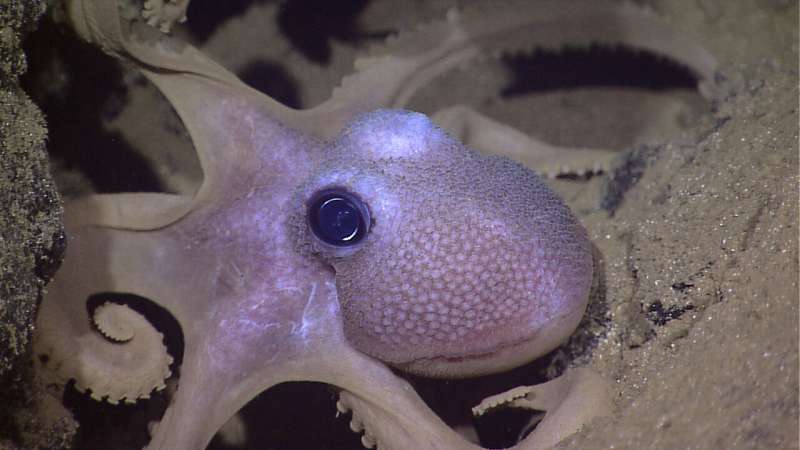3-D-printed smart gel changes shape when exposed to light

Inspired by the color-changing skin of cuttlefish, octopuses and squids, Rutgers engineers have created a 3-D-printed smart gel that changes shape when exposed to light, becomes "artificial muscle" and may lead to new military camouflage, soft robotics and flexible displays.
The engineers also developed a 3-D-printed stretchy material that can reveal colors when light changes, according to their study in the journal ACS Applied Materials & Interfaces.
Their invention is modeled after the amazing ability of cephalopods such as cuttlefish, octopuses and squids to change the color and texture of their soft skin for camouflage and communication. This is achieved by the thousands of color-changing cells, called chromatophores, in their skin.
"Electronic displays are everywhere and despite remarkable advances, such as becoming thinner, larger and brighter, they're based on rigid materials, limiting the shapes they can take and how they interface with 3-D surfaces," said senior author Howon Lee, an assistant professor in the Department of Mechanical and Aerospace Engineering in the School of Engineering at Rutgers University-New Brunswick. "Our research supports a new engineering approach featuring camouflage that can be added to soft materials and create flexible, colorful displays."
Rutgers engineers developed a 3-D printable hydrogel, or smart gel, that senses light and changes shape as a result. Hydrogels, which keep their shape and stay solid despite containing water, are found in the human body, Jell-O, diapers and contact lenses, among many examples.
The engineers incorporated a light-sensing nanomaterial in the hydrogel, turning it into an "artificial muscle" that contracts in response to changes in light. The light-sensing smart gel, combined with the 3-D-printed stretchy material, changes color, resulting in a camouflage effect.
Next steps include improving the technology's sensitivity, response time, scalability, packaging and durability.
More information: Daehoon Han et al, Multimaterial Printing for Cephalopod-Inspired Light-Responsive Artificial Chromatophores, ACS Applied Materials & Interfaces (2021). DOI: 10.1021/acsami.0c17623
Journal information: ACS Applied Materials and Interfaces
Provided by Rutgers University





















